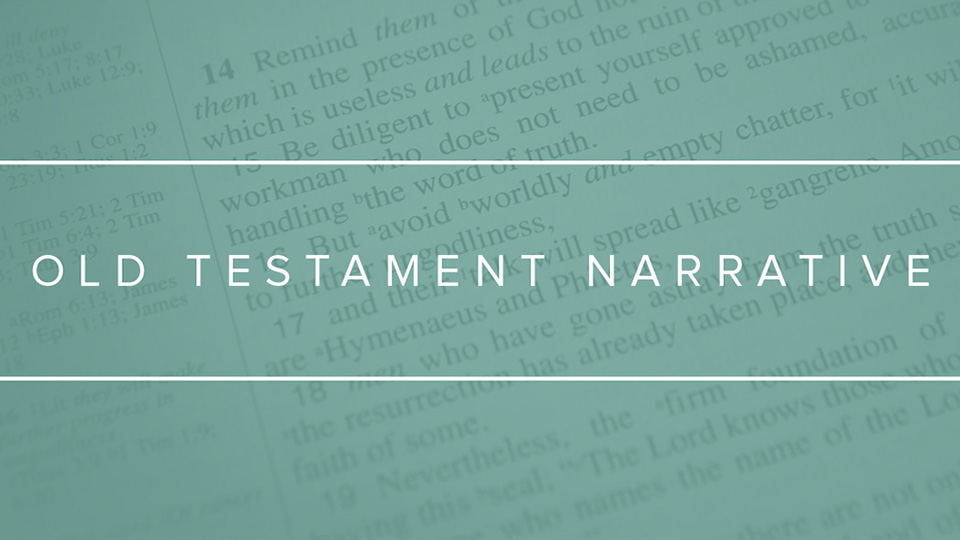Preaching Old Testament Narratives
Isn’t she someone else’s wife?
David ignores the question of his servant and sleeps with her anyway. She’s pregnant. David ignores the opportunity to come clean and orders her husband to be killed. The stealth of deception is absolutely shocking. Cold, sterile, calculated, lying. From the heart of the most poetic God-fearer who ever lived oozes this willful independence and vulgar dishonesty. David lied. David stole. David killed. He would be forgiven from these sins, but neither his kingdom nor his family would ever recover.
The narrative of 2 Samuel 11-12 is among the most provocative in all of Scripture, but it doesn’t have to be. What I mean is that even this most titillating, fearful, and warning passage can be reduced to a few simple statements. It’s easy really.
How exactly can this text be so stripped of its provocative nature? Take this example.
Imagine this text being preached as “Five Steps to Dealing with Distractions.” In the introduction to the text, we are told the whole story. Meaning this inductive narrative is now a deductive lesson. Then the preacher notes that in 11:1 David was on his rooftop when he should have been at war, i.e. he was distracted. Then, the rest of the sermon is built on this interesting observation in v. 1.
Let me assure you I am not being cynical. David was indeed distracted, and this is something every man needs to meditate upon. When the life is accomplished and the mind is idle, the hands will be tempted. There is indeed a warning there. The problem with this approach is not what it teaches but what it misses. Approaching this passage as a text only about distractions misses so much. There is a perpetual series of lies, there is the bull headed will to deceive. David is at war alright. He is warring against anyone who will get in the way of this cover up. The man who fought with God on His side is now fighting God. The king is at war. The King is at war.
This text is not a lesson to be taught; it is a story to be told. After the story is told, then the lesson is taught.
And what makes all this so compelling is the genre. The narrative form moves us from a rooftop to a bed, from a bed to a dynamic cover up, from a cover up to a confrontation, from a confrontation to a life wrecked with sin, and to a life ultimately restored. However, all of the majesty of the story—David’s dramatic descent into the hell of his deception—is lost when the narrative form is ignored. This text is not a lesson to be taught; it is a story to be told. After the story is told, then the lesson is taught.
So, what is the best approach to this and other Old Testament narratives?
- First, identify the scenes in the story. How many different scenes are in the narrative? This becomes the structure of the sermon. They may feel like points to the listener, but they are not points, they are scenes. Is this difference all that important? Yes, the idea of a “point” is that there is a truth to which you are pointing. This is the way in which most New Testament epistles develop. However, stories don’t work that way. They didn’t in the Hebrew culture, and they don’t in ours. Most often, you tell the story and then you know the “point” after the story is over.
- Second, feel free to save all the application to the end. Sure application can be woven throughout. This is a principle not a rule. However, the principle is that you can’t apply a truth until you have learned the truth, and you don’t know the full truth of the story until it’s over. So, while there are always exceptions, narratives work best as inductive then deductive. Work through the story to the point, then from the point work out the application.
- Finally, feel free to save the big idea until the end. The bane of modern cinema is that you feel like you have seen the movie after the first ten minutes. No surprise. No mystery or intrigue. Likewise, predictability is the bane of modern preachers. This is the danger of stealing whole sermons. It’s not just the plagiarism; it’s the inevitable “commonness” your message will have after a few years of reading someone else’s script. Our people may not know it, but they know it.
In the end David is restored but with a price. He has a massive scar from a wound that is healed. And this warning passage should be preached with this warning: don’t make this exciting story boring by ignoring the genre. Let the story breath.
This article first appeared on www.stevenwsmith.net



